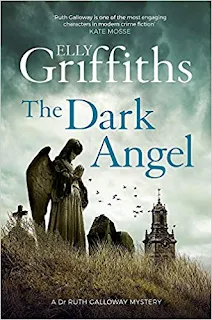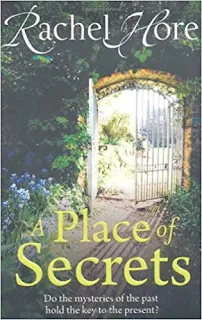Developer: Eipix Games
Publisher: Big Fish Games
Original Release Date: 18th December 2015
Platform: PC
I did intend my next post to be a Poirot Project one (I’m up to ‘Jewel Robbery at the Grand Metropolitan’ now), but I haven’t quite had time to finish it yet. I have played another HOPA game though, so I’m sneaking in a quick review of that before I get back to Hercule.
I’m still working my way through the Phantasmat series. I’m just playing the games in the order they were released, though I’m not definitely sure yet if I’m going to keep going until the latest release. I like the series, but it’s no substitute for
Mystery Case Files (my true love). I think part of the problem is that, while the Phantasmat games (so far) are well-made and fun to play, I miss the recurring characters from Mystery Case Files. Each Phantasmat game is, essentially, a standalone adventure, and there’s no suggestion that you’re playing as the same character from one game to the next (in fact, I think it’s pretty clear that you’re
not supposed to be the same person). Still, as standalone games, they’re good fun, and
Phantasmat: Behind the Mask (from
Eipix Games again is a decent (if slightly confused) instalment in the series.
The game begins with you receiving an invitation to a family reunion from your cousin Patrick. There’s something a little bit off about the invite – the details of the party seem a little vague – but you set off in your car nonetheless. Surprisingly for a Phantasmat game, you manage to get there
without crashing your car, but the Ward Mansion is all locked up when you arrive. Patrick calls you on your mobile to ask you to let yourself in, and that’s when the puzzles start.
I don’t think it’s really a spoiler to say that, when you get into the Ward Mansion, you run in to some fellow party guests. They… aren’t dressed in a contemporary style. If you’ve played the previous games in the series, you’re already expecting at least some of the characters to be ghosts, so this isn’t too much of a surprise (again, I don’t think this is a spoiler, as there’s no way you’d imagine that these characters are alive). The curious part is trying to work out why you’ve been invited to this family reunion, and what Patrick is up to. Things begin in an unsettling way, but soon get a bit darker.
There’s a lot of really good stuff in the
Behind the Mask storyline – including some grimly bizarre stuff at one point – but it’s also a bit of a mess. The Patrick plotline seems to be the main thrust of the game, and you solve puzzles to resolve this (it all seems to have something to do with a clock). However, about half an hour/an hour into the game (probably about the point the demo ends), you resolve this – at which point it’s revealed that there’s something else entirely going on. I liked both aspects of the story, but I struggled to see how they fit together. By the end of the game – including the bonus chapter (more on that shortly) – I understood what was going on in the main storyline, but I’m totally confused about Patrick and the clock. What was he trying to achieve? What was the significance of the clock? Turns out… that’s not really important.
I’ll admit I was a bit disappointed with the storyline in this one. As I say there are some great aspects, but it just doesn’t hang together. I’m happy to be a bit baffled by HOPA storylines – I’ll even forgive glaring plot holes – but I don’t like it when I just can’t follow the story at all. The Patrick subplot in
Behind the Mask was just too inexplicable for me.
Storyline aside, the game is beautifully designed. It’s got that classic Eipix style, with each scene illustrated in a stylish and detailed way. However, it’s not quite of the same standard as the previous instalment,
Dread of Oakville. NPCs are well-drawn (on the most part), but not fully animated, and the dialogue animations are a little stilted. The cutscenes are interesting – not fully animated, but drawn with an off-beat style that I enjoyed. The music is as you might expect from a HOPA, but it doesn’t really stand out, which is a shame given one part of the plot.
Again, though, the design is a bit disappointing after playing the previous instalments of the Phantasmat series. One of the things I’ve really liked about the games (which I’ve mentioned cryptically in
previous reviews) is the subtlety with which the NPCs alter as the game goes along (trying really hard to avoid spoilers). Sadly, that subtlety is absent in
Behind the Mask, and the NPCs go from ‘normal’ (and reasonably well-illustrated) to ‘evil’ (cartoonishly rendered) in the blink of an eye. There are a couple of egregious examples of this, which really made me miss the light touch of earlier games.
I feel like this is quite a critical review, so I do want to say that I
did enjoy the game. It’s just not a standout HOPA for me. The gameplay in the main game is fairly straightforward and logical. You move between rooms, picking stuff up, using inventory items, interacting with NPCs. Inventory items were, on the whole, used intuitively – though I was frustrated with finding that a fountain pen was intended to lever open a drawer at one point, and the bonus chapter gets more convoluted and unclear about next steps. But in the main game I found that I barely had to use Hint (and never Skip), as the gameplay was so straightforward.
Perhaps… just perhaps… the gameplay was a little bit too straightforward.
Behind the Mask isn’t a particularly difficult game. The HOGs look great, and everything is nice and clear, but there isn’t much challenge with this one. I completed some of the HOGs easily in less than a minute, and the mini games were similarly simple. It is a tricky balance, though, and on the whole I think I prefer this level of difficulty to the more impenetrable challenge of other games, which has you over-clicking the Hint button.
Behind the Mask has some gameplay features that are expected from Eipix, and from the series at this point. There are four difficulty levels, including Custom (yay!). I played with no tutorial, minimal black bar hints, minimal sparkles, and medium mis-click penalties, Hint and Skip. There is also a jump map, which you discover in-game part way through, but you probably won’t need to use it too much, as the back-and-forth is limited here (it’s always quite clear when you’ve ‘finished’ a room). As with previous instalments, there is the option of playing Match-3 instead of HOGs as well.
The NPCs in
Behind the Mask are pretty important to the story, and very much present in the game. But that doesn’t mean that they’re the hanging-around-asking-for-help type (à la
Gregory Logain, my HOPA nemesis). In this one (and I don’t think this is really a spoiler), the NPCs are the antagonists. Once you get past the pesky Patrick-and-the-clock plotline that opens the game, you meet the assembled ‘family reunion’ guests in turn: Abigail (a herbalist and orchid-grower), Claude (a musician), Norman (a big game hunter), Lisbeth (an artist), Patrick (he’s back!), and then… the other one (definitely no spoilers for that one though!).
Unusually for a HOPA, the NPCs function almost like end-of-level bosses, or at least as close to end-of-level bosses as you’d get in a HOPA. As the game progresses, you meet each of the members of the Ward family, find out a little bit about their backstory and the threat they pose, and
deal with them. The backstories are, mostly, the best bit of the game – though that tells you something about my tastes, to be honest. They’re tantalizing revealed through oddly-illustrated cutscenes, and they’re generally
really disturbing. Claude and Norman’s, in particular, are the stuff of proper horror fiction. It’s almost a shame how straightforward it is to neutralize them.
Sadly, though, these ‘end-of-level bosses’ get progressively easier and quicker to investigate. The amount of time you spend with Claude is much longer – and more developed – than the time you spend with Lisbeth. Still, it’s an interesting twist on the format, and one that I’d like to revisit in a future game.
I played the Collector’s Edition for this one, and so there were some extras. Firstly, there were morphing objects and collectibles. These were pretty easy to find so didn’t detract too much from the main gameplay. The CE has some limited Achievements (I think there were four altogether), and a Souvenir Room. There’s no endgame with the collectibles or Souvenir Room, but they add a couple of extra tasks to the game. The bonus content includes replays on HOGs and mini-games, and a second chance to find any collectibles you missed first time round. You can also replay Match-3 for a while, if you fancy it.
The main attraction of the CE is, of course, the bonus chapter. I have mixed feelings about this one. Story-wise, it’s great and really adds an extra dimension to the plot of the main game – though I think if you played the SE (without this additional material), you’d be even more baffled about what’s going on than I was. However, the gameplay leaves a bit to be desired. It’s far less intuitive and logical than the main game, and I found myself constantly reaching for Hint to explain what I had to do next.
I do feel that I’ve been quite negative about this one, which I didn’t intend. It’s a fun game, and some of the backstory is wonderfully dark and brutal. It’s just not the strongest instalment in the Phantasmat series, and some features felt a bit phoned-in. If I compare
Behind the Mask to a lot of the other HOPAs I’ve played, it certainly comes off well. But compared to the rest of the series so far (and to my beloved Mystery Case Files), it’s a bit of a let-down.
I haven’t decided yet whether the next game I play will be the next instalment of the Phantasmat series. The completist in me wants to keep going with them in sequence, but it might be time for a break. I’m not sure… but even if I do play a different game next, I’m sure I’ll come back to the series again in the future.



























